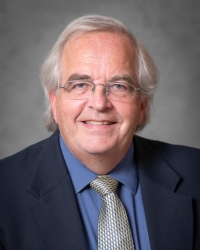Professionalism Counts, June 2017
|
Learn more about Professionalism resources at the Academy. |
Make Sure Your CE Is ‘Relevant’
To be qualified under the Qualification Standards for Actuaries Issuing Statements of Actuarial Opinion in the United States (the USQS), actuaries must “complete and document” 30 hours of “relevant continuing education” (CE) each year.
The USQS identifies various choices for meeting the 30-hour CE requirement. While 6 hours of CE must be from “organized activities,” involving interaction with actuaries or other professionals working for different organizations, the remainder can be from “other activities.”
According to the USQS, “other activities” encompasses a broad variety of activities, from reading actuarial literature and listening to recorded conferences to attending seminars and volunteering on a professionalism committee. (Relevant CE also includes at least 3 hours of professionalism CE and not more than 3 hours of business and consulting skills CE.)
Whatever form of CE an actuary completes, the USQS requires the substance to be “relevant” to the actuary’s current or intended practice. The USQS describes actuarial science as “a constantly evolving discipline” and notes that “it is important that [actuaries] remain current on emerging advancements in actuarial practice and science that are relevant to the Actuarial Services they provide.” Keith Passwater, chairperson of the Academy’s Committee on Qualifications, states the objective of CE more succinctly: “CE should make you a better actuary.”
The General Qualification Standard provides baseline guidance on relevance. Section 2.2.7 states that CE is “relevant” if:
- it broadens or deepens your understanding of one or more aspects of your work;
- the material expands your knowledge of practice in related disciplines that bear directly on your work; or
- it facilitates your entry into a new area of practice.
Relevant CE makes you more knowledgeable about the work you are doing or the work you intend to do. The USQS is principle-based. As an actuary, you are responsible for making “a reasonable, good-faith determination of what [CE] opportunities will enhance [your] ability to practice in a desired field.”
There are also several instances where the USQS is more specific about what constitutes relevant CE:
- Under the General Qualification Standard, Section 2.3.2 addresses the CE needed for issuing a statement of actuarial opinion (SAO) that blends two or more areas of actuarial practice, stating “[i]n meeting the continuing education requirement, an actuary should include material in all areas of actuarial practice relevant to the [SAO] (emphasis added).” Earlier this year, the Committee on Qualifications helpfully updated its answer to a frequently asked question (FAQ) dealing with long-term care (LTC) to state that an actuary issuing an LTC-related SAO should ensure that at least some of his or her continuing education relates directly to LTC-related topics. (FAQ 50)
- To issue SAOs for NAIC annual statements covered by the Specific Qualification Standards, Section 3 of the USQS requires an actuary to complete at least 15 hours of CE per calendar year that is “directly relevant” to the topics listed in USQS Section 3.1.1.
- When an actuary changes areas of actuarial practice—whether the new area is covered by the General or Specific Qualification Standard—Section 4.1 of the USQS requires an actuary to complete CE “that is relevant to statements of actuarial opinion to be issued in the new area of practice.”
- USQS Section 4.3 states that actuaries practicing in emerging or nontraditional fields “can satisfy [CE] requirements by maintaining knowledge of applicable standards of practice, actuarial concepts, and techniques relevant to the topic of the statement of actuarial opinion.”
While there may be many ways to earn CE, keep in mind that the CE you complete must be relevant to the actuarial services you provide to satisfy the requirements of the USQS. Take the time to ensure the CE you choose will meet those requirements—and make you a better actuary.
(Featured in the June 2017 Actuarial Update.)
Share






